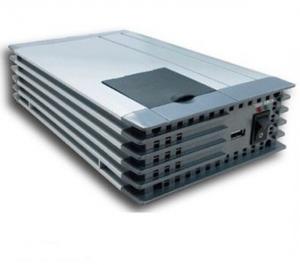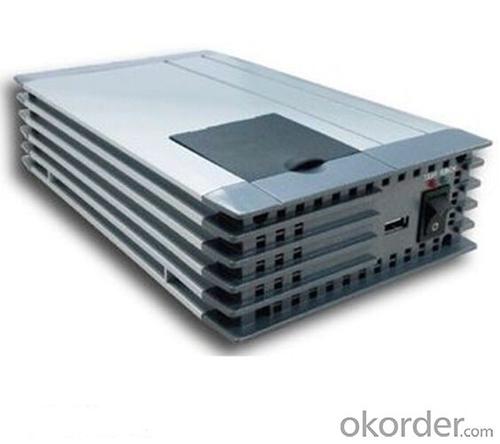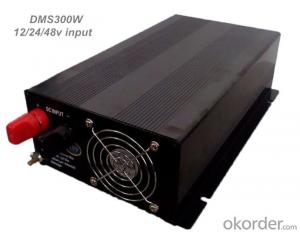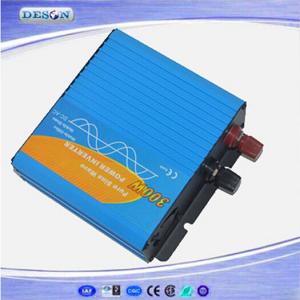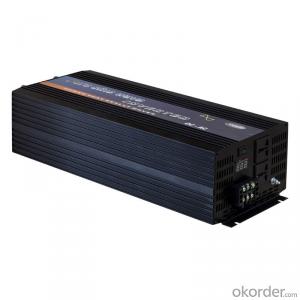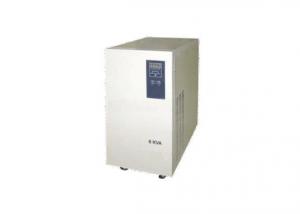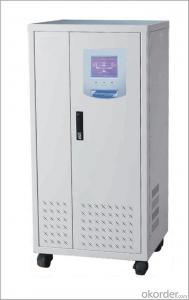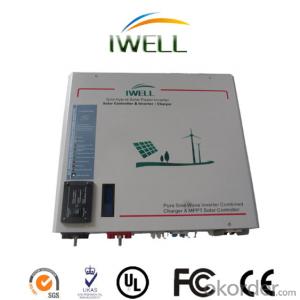300 Watt Pure Sine Wave Solar Inverter 350Watt
- Loading Port:
- China main port
- Payment Terms:
- TT or LC
- Min Order Qty:
- 150000 watt
- Supply Capability:
- 3000000 watt/month
OKorder Service Pledge
OKorder Financial Service
You Might Also Like
1. Structure of Pure Sine Wave Photovoltaic Inverter 350Watt
ParaWatt Series inverter is a leading product in the industry, which has high cost performance. LED indicating lights can work under -25°
C ambient temperature.
Advance circuit design and high standard choice of components maximized its adaptability to inductive and capacitive loads. ParaWatt series
inverter can be used in cars, yachts and solar systems.
The superior performance and reliable quality makes ParaWatt series inverter the best choice for your requirements.
2. Main Features of Pure Sine Wave Photovoltaic Inverter 350Watt
• High efficiency 88%~89%
• Input & output fully isolation design
• THD <3%
• High surge capable of starting motor load
• EMC, multi-protection
• Temperature controlled cooling fan
• Ultra-compact design, low weight
•Brackets can be detachable and mounted; suit for different environments
• Output connector is designed on the top of chassis, suit for all kinds of connection modes
• USB interface 5V/12V
3. Pure Sine Wave Photovoltaic Inverter 350Watt Images
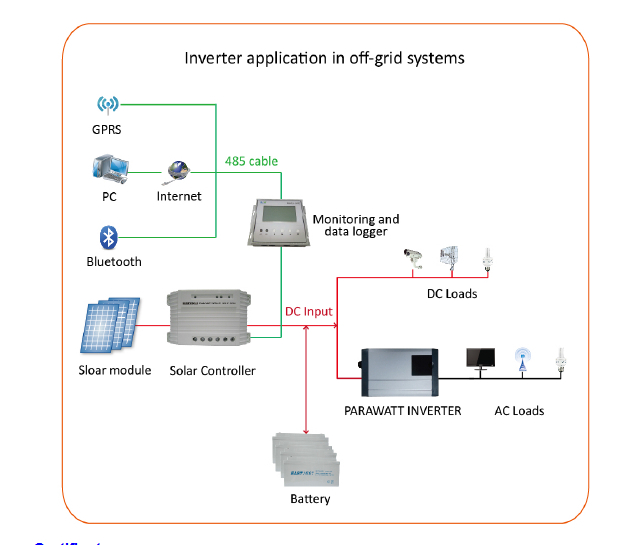
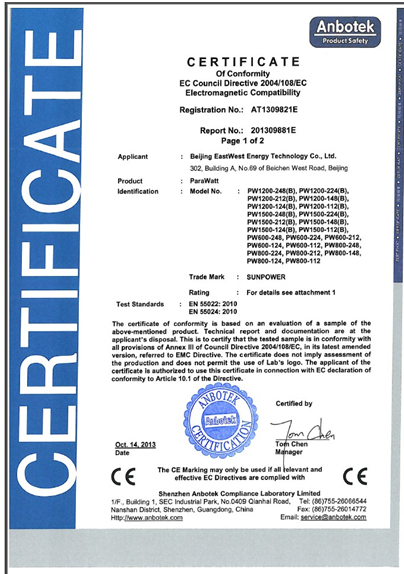
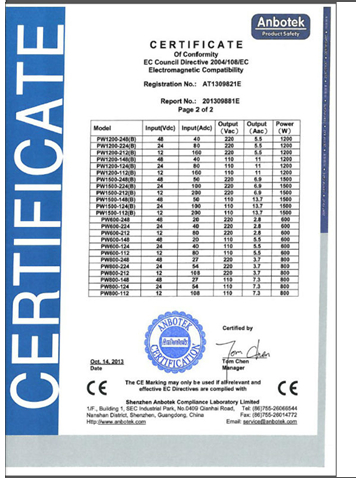
4. Pure Sine Wave Photovoltaic Inverter 350Watt Specification
窗体顶端 DC input voltage 窗体底端 | 12V | 24V |
Low voltage shut | 10.5±0.3VDC | 21.0±0.3VDC |
Low voltage resume | 12.0±0.3VDC | 24.0±0.3VDC |
High voltage shut | 15.0±0.5VDC | 30.0±0.5VDC |
High voltage resume | 14.5VDC | 29.0VDC |
Auto resume | Yes | |
Auto Protection | Over load, Over voltage, Low voltage, Over temperature, | |
Short circuit | ||
Cooling | Temperature and loading controlled cooling fan 窗体底端 | |
5. FAQ of Pure Sine Wave Photovoltaic Inverter 350Watt
Q1:Can we visit your factory?
A1:Sure,welcome at any time,seeing is believing.
Q2:Which payment terms can you accept?
A2:T/T,L/C,Moneygram,Paypal are available for us.
- Q: Can a solar inverter be used with batteries for energy storage?
- Yes, a solar inverter can be used with batteries for energy storage. In fact, this combination is commonly used in residential and commercial solar systems to store excess solar energy generated during the day and use it later when the sun is not shining, such as at night or during power outages. The solar inverter converts the DC power from the solar panels into AC power for immediate consumption or for charging the batteries. The batteries then store the excess energy for later use, providing a reliable and continuous power supply.
- Q: Can a solar inverter be integrated with smart home systems?
- Yes, a solar inverter can be integrated with smart home systems. Smart home systems are designed to connect and control various devices in the home, including solar inverters. By integrating a solar inverter with a smart home system, homeowners can monitor and control their solar energy production, consumption, and storage, as well as optimize energy usage based on real-time data. This integration allows for greater efficiency, convenience, and cost savings in managing solar power within a smart home ecosystem.
- Q: What is the typical size and weight of a solar inverter?
- The typical size and weight of a solar inverter can vary depending on the capacity or power rating of the system. However, in general, residential solar inverters are compact and lightweight, with dimensions around 14-18 inches wide, 20-24 inches tall, and 6-8 inches deep. Their weight usually ranges between 25-50 pounds. Commercial or utility-scale solar inverters, on the other hand, can be much larger and heavier, often weighing hundreds or even thousands of pounds.
- Q: How does a solar inverter handle voltage and frequency variations caused by grid disturbances?
- A solar inverter is designed to handle voltage and frequency variations caused by grid disturbances by employing various control mechanisms and protection features. Firstly, the inverter continuously monitors the voltage and frequency levels of the grid, and it adjusts its output accordingly to match the grid's requirements. If there is a voltage or frequency fluctuation, the inverter will either increase or decrease the output power to maintain the desired voltage and frequency levels. To handle voltage variations, the solar inverter utilizes a voltage regulation mechanism. If the grid voltage increases or decreases beyond a certain threshold, the inverter adjusts its internal voltage regulation circuitry to ensure a stable and regulated output voltage. This helps protect the inverter and connected devices from potential damage due to overvoltage or undervoltage conditions. Similarly, to handle frequency variations, the solar inverter incorporates a frequency control mechanism. If the grid frequency deviates from the specified range, the inverter adjusts its internal frequency control circuitry to maintain a stable and accurate output frequency. This ensures that the power generated by the solar panels remains synchronized with the grid, allowing for efficient power transfer and preventing any damage to the inverter or connected devices. Furthermore, solar inverters often include advanced features such as anti-islanding protection. This feature detects any abnormal grid conditions, such as voltage or frequency fluctuations beyond a safe limit. If an islanding condition is detected, where the solar system continues to generate power even when the grid is down, the inverter will disconnect from the grid to prevent any potential safety hazards for utility workers. Overall, a solar inverter is designed to handle voltage and frequency variations caused by grid disturbances through continuous monitoring, voltage regulation, frequency control, and protective features. These capabilities ensure reliable and safe operation of the solar power system while maintaining a stable connection with the utility grid.
- Q: What are the different output waveforms of a solar inverter?
- The different output waveforms of a solar inverter can vary depending on the type of inverter being used. The most common types include pure sine wave, modified sine wave, and square wave. Pure sine wave inverters produce an output waveform that closely resembles the standard AC power provided by utility companies, making them ideal for powering sensitive electronics. Modified sine wave inverters produce a stepped waveform that may not be as smooth as a pure sine wave, but can still power most household appliances. Square wave inverters produce a more basic waveform with abrupt transitions between positive and negative voltage, typically used for powering simple devices or tools.
- Q: Are there any maintenance requirements for solar inverters?
- Yes, there are maintenance requirements for solar inverters. While solar inverters are generally reliable and require minimal maintenance, regular inspections and maintenance are still necessary to ensure optimal performance and longevity. Some common maintenance tasks for solar inverters include: 1. Regular cleaning: Dust, dirt, and debris can accumulate on the surface of the inverter, potentially affecting its cooling capabilities. Regular cleaning helps to prevent overheating and ensures efficient operation. 2. Visual inspection: Regularly inspecting the inverter for any signs of damage, loose connections, or corrosion is important. This can be done visually to identify any issues that may affect its performance. 3. Firmware updates: Manufacturers often release firmware updates to improve the performance and functionality of the inverter. It is recommended to regularly check for and install these updates to ensure the inverter is operating at its best. 4. Monitoring system performance: Utilizing a monitoring system allows for the continuous monitoring of the inverter's performance. Any abnormalities or issues can be identified promptly, enabling quick maintenance or repair. 5. Professional maintenance: It is advisable to have a professional solar technician inspect and maintain the inverter at least once a year. They can perform more in-depth inspections, test the inverter's electrical connections, and troubleshoot any potential issues. By following these maintenance requirements, solar inverters can continue to operate efficiently and reliably, maximizing the benefits of solar energy production.
- Q: Can a solar inverter be used in conjunction with a generator?
- Yes, a solar inverter can be used in conjunction with a generator. In fact, it is a common setup in hybrid systems where the solar panels generate electricity during the day, and the generator provides power during periods of low solar production or high energy demand. The solar inverter converts the DC power from the solar panels and the AC power from the generator into a usable form for the connected appliances and the grid. This combination allows for a more reliable and efficient power supply.
- Q: How does a solar inverter handle different temperature conditions?
- A solar inverter is designed to handle different temperature conditions by incorporating various features and mechanisms. Firstly, it is equipped with a temperature sensor that continuously monitors the inverter's internal temperature. If the temperature exceeds a certain threshold, the inverter activates cooling mechanisms such as fans or heatsinks to dissipate the heat and prevent overheating. Additionally, the inverter's components are selected and designed to withstand a wide range of temperatures, ensuring their functionality and longevity even in extreme conditions. Furthermore, modern inverters often have built-in protective measures like thermal derating, which reduces the inverter's power output as the temperature rises, ensuring it operates within safe limits. Overall, solar inverters are engineered to adapt and operate efficiently in varying temperature conditions for optimal performance and reliability.
- Q: How does a solar inverter communicate with monitoring systems?
- A solar inverter communicates with monitoring systems through various means such as wireless technologies like Wi-Fi, Bluetooth, or Zigbee, or through wired connections like Ethernet or RS485. These communication channels allow the inverter to transmit important data and performance metrics to the monitoring systems in real-time.
- Q: What is the difference between a single-phase and three-phase solar inverter?
- A single-phase solar inverter is designed to convert the DC power generated by solar panels into AC power for use in a single-phase electrical system. It is suitable for smaller residential installations. On the other hand, a three-phase solar inverter is capable of converting DC power into AC power for use in a three-phase electrical system. It is typically used in larger commercial or industrial solar installations. The main difference lies in the electrical system they are compatible with and the scale of the solar installation they can support.
Send your message to us
300 Watt Pure Sine Wave Solar Inverter 350Watt
- Loading Port:
- China main port
- Payment Terms:
- TT or LC
- Min Order Qty:
- 150000 watt
- Supply Capability:
- 3000000 watt/month
OKorder Service Pledge
OKorder Financial Service
Similar products
Hot products
Hot Searches
Related keywords
